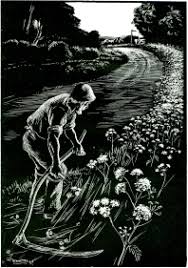A few weeks later a similar operation revealed all those problems writ large and with high drama. A complex operation with weak materials and then a rupture.Heavy blood loss ensued and a room of high emotion as the surgeons worked frantically, the scrub nurse worked frantically and likewise the anaesthetic team. I found that I was holding my breath as this 'piece of silk' disintegrated in their hands and I saw a miracle as they raised the Titanic.
How does an expert work? they cope with deteriorating situations making difficult decisions in the moment. How do you spot invisible deterioration? How do you decide how far to go? How do you decide that you can't do anything, that the mend itself will do more damage than the tear. I know these decisions, they are material. How do you know when to cut your losses? How do you go from a planned small repair to a big unexpected one?There is no hindsight only expertise.
All the while the other team members worked like bees, so quietly and efficiently. The clear liquid in the drip was changed for thick red, then clear red, then two shades of yellow. When the emergency was over it seemed that they all stood quietly and cleaned their antennae.
I realised that pledgets are small promises made with each stitch.







